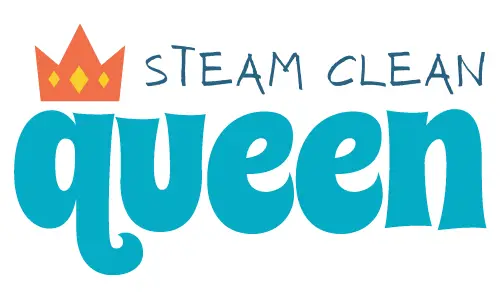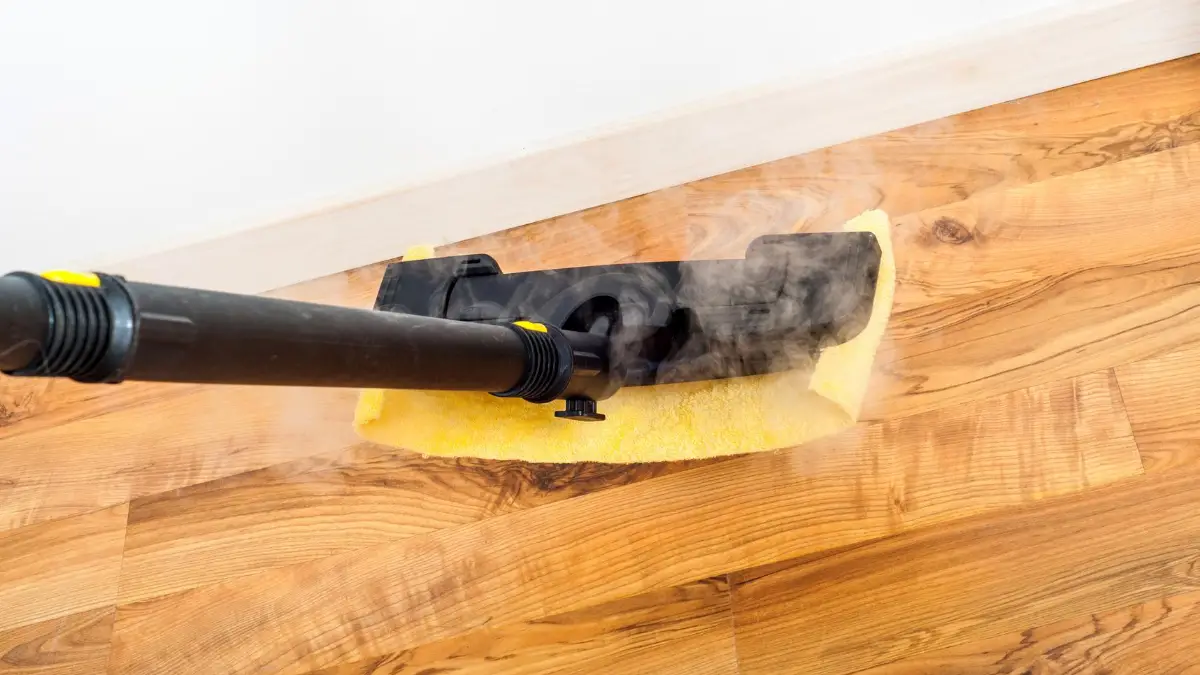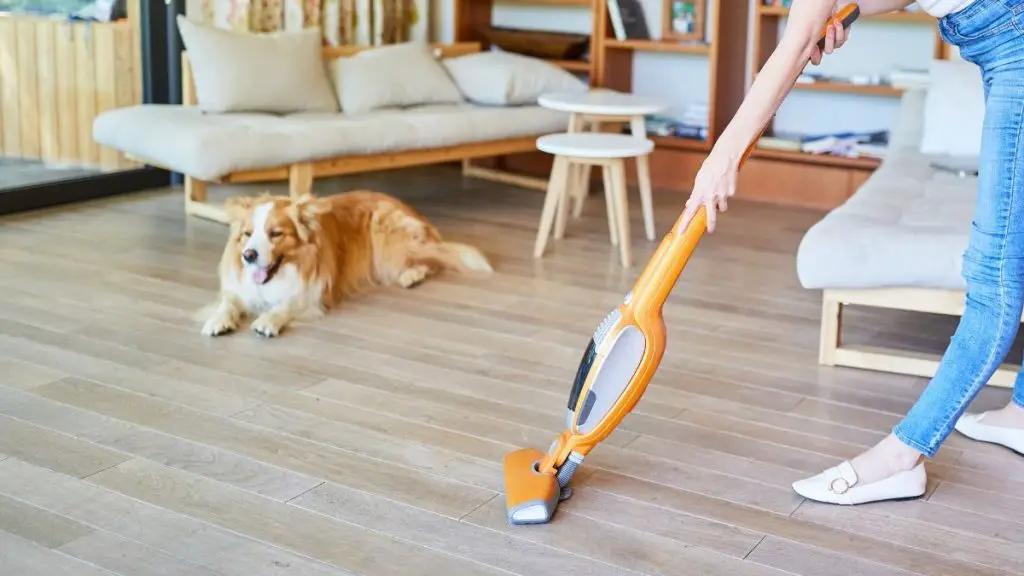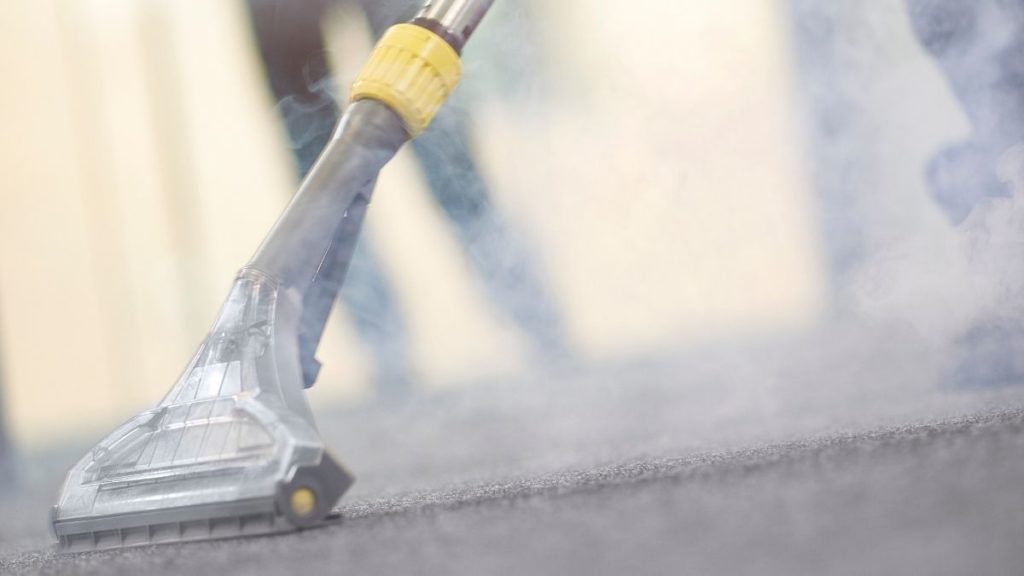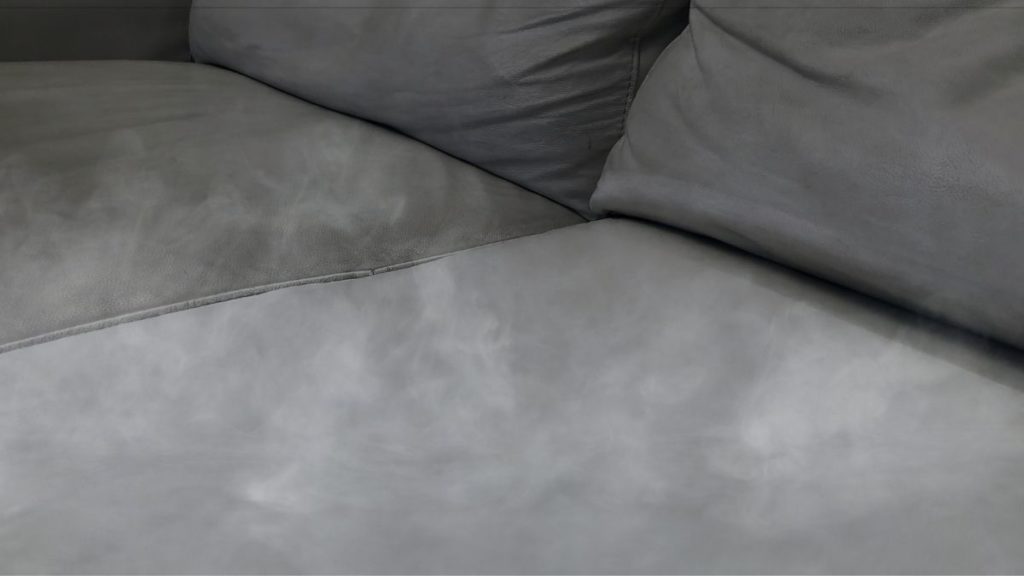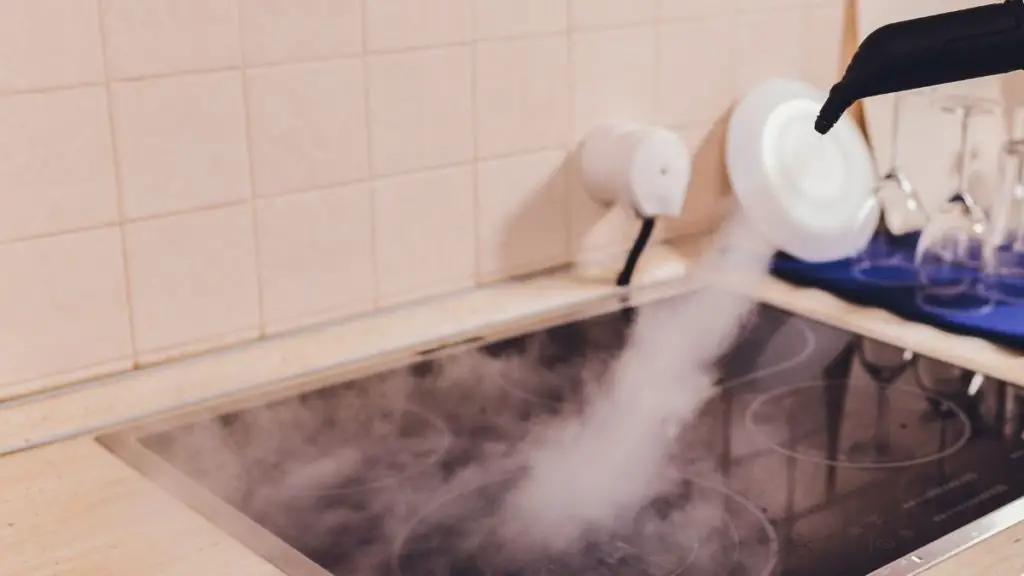Cleaning Laminate Floors with Steam Mop: Can You Do It Safely?
*As an Amazon Associate we earn from qualifying purchases. The price to you remains the same.
There’s no doubt using a steam mop can leave your floors spick and span. You also have the added advantage of a faster, more effortless cleaning experience.
Now you’re probably wondering, can you use a steam mop on laminate flooring?
We advise you don’t, and we’ll get into further detail why.
Table of Contents
The Risks of Using a Steam Mop to Clean Laminate Floors
1. Moisture causes rot and mold
Since steam mops use steam vapor, this also builds moisture on your flooring.
The moisture from the steam mop can easily seep through the cracks and gaps of your laminate flooring, which damages the laminated layers and the photo.
Eventually, your floor will produce a musty smell, and the photo will also fade over time. When this happens, it means moisture is lingering in between the planks of your laminate flooring.
This also carries the risk of mold growth and cause even further damage long-term.
2. Steam wears out your laminate sealant
Steam mops reach high temperatures, which in effect, can break the sealant in your laminate floor.
If your laminate flooring is continually exposed to high temperatures, this will also break the adhesive that holds the planks in place.
Take note that laminate floors are made of planks of different material hard-pressed into one. The adhesive that holds these planks together is at risk when exposed continuously to extreme heat.
You may not notice any damage the first few times you use your steam mop; however, here are common signs of a damaged laminate floor:
- Warping
- Bending
- Bulging joints
- Swelling
- Faded & dull appearance
3. Your laminate floor will lose its shine
Cleaning wooden flooring with a steam mop is actually not a problem. Not all wood floors are susceptible and vulnerable to damage if you use a steam mop.
Laminate floors, on the other hand, have a coating and shine that steam mops can cause deterioration over time.
You’ll notice that at first, your laminate floor is shiny and glossy.

Once you continue to use a steam mop on your laminate floor, the shiny, glossy finish will disappear eventually.
Aesthetics might not be too much of an issue for you in this case; however, absent any coating will even place your laminate floor at a higher vulnerability to steam and extreme heat.
4. Steam cleaning voids your warranty
If any damage was done to your floors using a steam mop, companies are not held liable for the damage. This will be recognized as an improper cleaning method used.
Once moisture or water seeps in between your laminate floors, this already puts your warranty at risk of being voided.
What Is Laminate Flooring Made Of?
Laminate floors look similar to hardwood, but in reality, it’s not. Laminate is made of layers pressed together, specifically 5 layers:
- Topcoat (seal coating that protects your floor)
- Picture/Photo (An actual photo of wood)
- Wood composite layer
- Structural support layer
- Moisture barrier
Essentially, laminate is made of fiberboard materials and melamine resin. The process that seals all these materials together is called lamination.
Your picture/photo layer is then placed on top of this laminated layer, which is further topped by a topcoat protective layer.
What’s great about laminate flooring is how cost-effective it is to install and is quite durable provided proper care and maintenance. Some even contain an antimicrobial resin to add more protection.
There are a few drawbacks, though.
Due to the fact laminate floors are composed of natural materials and a glossy finish or topcoat, this makes laminate poorly resistant to heat and moisture.
Even standing water can damage your laminate. If left long enough, it will seep in and cause the floor to warp and loosen over time.
What About Waterproof Sealed Laminate Floors?

Sealed laminate floors carry better resistance and are not as vulnerable to damage if you use a steam mop.
Needless to say, it’s still laminate. If you prefer to use a steam mop, we suggest using the lowest setting when cleaning flooring.
If you want a safer option for keeping your floors clean without damaging it, we recommend you use a microfiber mop, since it’s adequate for floor cleaning laminate material.
You can also use a cleaning solution together with your mop to help remove any dirt, stain, and grime.
If you add waterproof coating, this will help and protect your laminate from water seeping in between the layers; however, for safety precautions, we still suggest using a steam mop at the lowest setting.
Best Ways to Clean Laminate Flooring
In this section, we’ll talk about the best ways to clean laminate, DIY solutions to use, what solutions are inadequate for laminate, and how to clean special messes.
Tools to Use
When it comes to laminate flooring, cleaning effectively without causing any damage requires two primary tools: Vacuum cleaner and microfiber mop.
The microfiber fop should be made of split microfiber. This will help absorb dust particles, dirt, and water.
We also prefer that you use a vacuum cleaner instead of a broom. A vacuum cleaner has stronger suction power and is more effective in picking up grit off your floor.
Grit can scratch your floors and damage your floor shine. Using a broom will not adequately remove grit. If you use a broom to try and sweep dust particles off your floor, this will only cause the dust to resettle in the air.
Cleaning Solutions
Most people use vinegar and hot water as their DIY cleaning solution. Using equal parts of hot water and vinegar, you can pour this mixture into a spray bottle, and you’re all set.

Sometimes though, the smell of vinegar can be unpleasant. To counter this smell, you can either use liquid detergent or essential oils, e.g., lemon, eucalyptus, lavender, etc.
Take note, though, that using liquid detergent can dull the appearance of your floor over time. The great thing about using vinegar and water alone is that these are chemical-free and much cheaper than buying a retail brand.
Using a commercial floor cleaner shouldn’t be a problem for you if you don’t mind spending a little extra. If you feel more comfortable using a commercial floor cleaner than a DIY solution, by all means, go for it.
Here are 2 sample recipes of a DIY cleaning solution you can use:
Recipe 1
- 1/2 cup Rubbing Alcohol
- 1/2 cup Water (Distilled)
- 1/2 cup Vinegar (Distilled/White)
- 4 drops of dishwashing liquid
- 5 drops of essential oil (orange, lemon, eucalyptus)
Recipe 2
- 2 drops Castile soap
- 3 drops of lemon essential oil
- 2 drops of essential tea tree oil
- 2 cups of warm water
If you have laminated tile floors, you can use this recipe:
- 2 cups of vinegar (distilled)
- 2 cups of warm water
- 5 to 10 drops of essential oils
Finally, to keep that shine constant in your laminate floor, this recipe is a great DIY solution:
- 2 cups warm water
- 1 tablespoon of white vinegar (distilled)
- 2 tablespoons vegetable oil
- 5 drops of essential oil
Cleaning Special Messes on Laminate Flooring
Let’s say you accidentally spilled nail polish on your floor, or maybe there’s gum stuck on your laminate flooring.
Do we also use a DIY cleaning solution and a mop to clean this? Not quite.
A unique mess like this requires using special cleaning solutions for this as well. Before you grab your abrasive cleaner or scouring pad, we strongly advise against using one.
Abrasive cleaners can scratch your floor easily. If a special mess like this happens frequently, do you really want to see your floor full of scratches?
For nail polish, we recommend using a non-acetone fingernail polish remover, or you can use a WD-40 cleaner. These both work differently from your regular cleaning solutions and are designed to remove special cases like nail polish, for instance.

When using the fingernail polish remover, don’t just dip the solution on the stain. Make sure to use a cotton ball and wipe the stain away gently.
For gum stuck to your laminate, cover the gum area with ice to freeze it, since rubber is vulnerable to cold. After a while, use a non-abrasive plastic scraper to gently remove the gum without scratching or damaging your floor.
Mistakes to Avoid
We’ve already talked about the best way to clean your laminate and the solutions to use; however, there are a few tips to follow and mistakes to avoid when you clean laminate:
Stay away from Protected Shine products
Protected shine products do clean your floor, but they also fill in scratches and scuffs. These products have a filler as part of their product composition, which can dull the appearance of your floor.
Don’t Use Too Much Water
Water is laminate’s worst enemy. Sure, it can do wonders in providing clean flooring for most surfaces and situations, but as mentioned earlier, too much moisture can seep in between the cracks of your laminate.
When using your microfiber mop, make sure you don’t soak the mop with too much water. This will leave puddles while you clean and cause the layers in your laminate to peel and separate.
Don’t Use Bleach
For years, bleach was used as a standard effective cleaner against dirt, stains, and grime. Recent studies have shown, however, that the chemicals found in bleach pose health risks for individuals.
Since laminate flooring is porous, your floor will easily soak bleach and deteriorate the appearance and coating, which removes the shiny effect over time.
Bleach also leaves stains and, over prolonged use, will change the appearance of your floor.
Final Advice

Although steam mops count as the best way or solution to clean most floors, windows, and even small kitchen appliances, moisture, and extreme heat does have its drawbacks.
It shouldn’t be too much of a challenge to clean your laminate floors effectively while keeping that glossy coat sustained and good-looking.
Remember to take the necessary precautions and use only what is recommended by your manufacturer. If you insist on using a steam mop, there are a few mops that offer lower temperature settings and leave behind less moisture.
